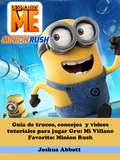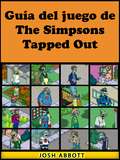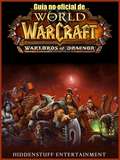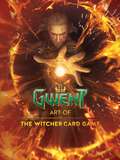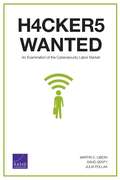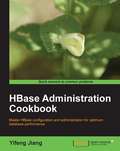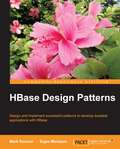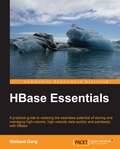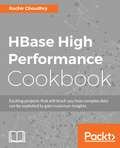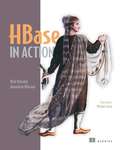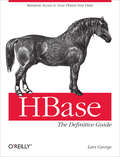- Table View
- List View
Guía de seguridad informática y copias de seguridad para PC: Como realizar copias de seguridad y proteger tu PC con software Antivirus y Antimalware
by Jon AlbertUna guía detallada para conocer todo sobre la seguridad informática y las copias de seguridad. Esta guía te ayudará a proteger a tu ordenador de los virus, a mantener la seguridad en línea y a conocer el software de seguridad en línea gratuito. Basándose en trucos fáciles, este libro te aprenderás acerca de: - Copias de seguridad, cortafuegos, malware y antivirus. - Descarga de software gratuito. - Microsoft Security Essentials. - Protección de software Avast Free. - Software de cortafuegos. - Spyware y Adware. - Cómo utilizar los bloqueadores de ventanas emergentes. - Alternativas gratuitas para copias de seguridad. - Almacenamiento en línea. - Software de recuperación.
Guía de trucos, concejos y videos tutoriales para jugar Gru: Minion Rush
by Rosa Gallardo Ojeda Joshua AbbottEs una guía no oficial del juego Gru: Mi Villano Favorito Minion Rush el cual aprenderá exactamente lo que necesita saber para convertirse en un jugador experto y lograr la puntuación más alta! Mi guía cubre lo siguiente: - Información básico de Gru:Mi Villano Favorito: Minion Rush. - Artículos de interés. - Guía de activación. - Monedas, multiplicadores y Batalla. - Estrategias para todos los tipos de niveles. - Secretos, Consejos y trucos utilizados por los jugadores profesionales! - Instrucciones detalladas paso a paso! - Video Guía de las estrategias generales en el juego. - Y mucho más! Este producto no está asociado, afiliado, endosado, o patrocinado por Gameloft, tampoco ha sido revisado o certificados por alguien. Esta guía debe ser utilizada como referencia. De ninguna manera modifica o altera el juego. Esto es una guía escrita y no un programa del software
Guía de usuario para principiantes de Excel 2022
by Kylie CoxExcel es el software de hoja de cálculo más popular en el mundo, y por una buena razón. Es excelente, versátil, y fácil de utilizar, convirtiéndolo en una gran elección para uso personal y profesional. Excel tiene algo que ofrecerte, bien sea que estás comenzando con las hojas de cálculo, o eres un profesional experimentado. En esta guía de principiante, cubriremos las bases de Excel, de manera que puedas empezar a trabajar rápidamente.
Guía definitiva para usar Windows 10
by Hiddenstuff EntertainmentEste libro en Windows 10 es una breve guía del usuario. Enumera la forma de hacer una variedad de cosas allí usando la barra de búsqueda y dice exactamente en qué hacer clic para realizar muchas acciones necesarias. Básicamente, le dice a alguien cómo navegar por el sistema para poder usarlo de la manera más efectiva.
Guía del juego de The Simpsons Tapped Out
by Marina García Rodríguez Joshua Abbott¡Construye la mejor ciudad y consigue mucho dinero! Con la guía del juego de The Simpsons Tapped Out (o Los simpsons Springfield), aprenderás exactamente todo lo que necesitas para convertirte en un jugador experto, ¡y ganarás rosquillas y dinero ilimitados! Este libro es una guía completa sobre todo lo que necesitas saber del juego. ADEMÁS, también podrás bajarte la versión gratuita del juego con esta compra. - ¡Cómo descargar The Simpsons Tapped Out (o Los simpsons Springfield) GRATIS! - Válido para iPhone y Android. - Vista general e información básica - ¡Estrategias avanzadas para progresar en el juego! - ¡Consigue dinero ilimitado! - ¡Consigue rosquillas ilimitadas! - ¡Cómo subir de nivel más rápido! - ¡Cómo conseguir rosquillas gratis! - Ubicaciones y su código postal. - Modos de juego y logros. - Instrucciones detalladas fáciles de seguir. - ¡Los secretos, trucos y objetos descargables que solo los jugadores profesionales usan! - ¡Y MUCHO MÁS! ¡Compra ahora y no te quedes nunca más sin rosquillas! ¡Vuélvete uno de los mejores jugadores ahora! Descargo de responsabilidad: Este producto no se ha asociado, afiliado, relacionado ni financiado por EA Games, ni ha sido revisado, probado o certificado por EA Games. Esta guía debe servir como referencia, por lo que no modifica el juego de ninguna manera. Es una guía escrita y no un programa de software.
Guía del usuario de MacOS Ultimate
by Adidas Wilsona primera computadora exitosa con una GUI, la capacidad de permitir a los usuarios obtener una vista previa de un documento antes de imprimir, y un mouse fue la Mac. Las siguientes son las razones por las que ha seguido siendo relevante durante todos estos años. Iconos convertidos en arte. Dado que Mac fue la primera computadora con una GUI, fue la primera en tener íconos. Susan Kare diseñó esos primeros íconos para Mac. Las Mac ruegan por estar en red. Cuando se lanzó Mac, las redes informáticas eran exóticas y caras; pero incluso entonces, las Mac podrían conectarse fácilmente entre sí. HyperCard inspiró parcialmente la Web. La HyperCard fue creada por Bill Atkinson en 1987. A través de esta aplicación, cualquiera podía crear tarjetas en pantalla con hipervínculos, imágenes o textos. La computadora portátil Mac viene avanzada desde el primer momento, viene con muchas herramientas básicas como administración de calendario, correo electrónico, etc. Sin embargo, hay otro mundo de software poderoso para Apple Mac que facilitará las tareas complicadas. Aunque la mayoría de ellos no son gratuitos, solo cuestan unos pocos dólares y valen la pena. Aquí están algunos de los mejores.
Guía del usuario de la cámara del iPhone 14 Pro Max: El manual completo para que los principiantes aprendan a hacer fotos profesionales
by Wendy HillsSi estás deseando tener en tus manos el nuevo iPhone 14 Pro Max, si todavía estás esperando a que llegue tu iPhone, o si todavía no has pedido tu iPhone 14 Pro Max pero quieres una guía de usuario con ilustraciones que sea fácil de entender, escrita con una gramática sencilla y que te muestre cómo empezar a utilizar rápidamente tu iPhone, entonces este libro es para ti. Te mostrará cómo utilizar tu recién adquirido iPhone 14 Pro Max. El iPhone 14 Pro Max es sin duda el mejor iPhone disponible ahora mismo. Sus cámaras, su gran pantalla, su increíble diseño y su pantalla inteligente son solo algunas de las características que lo han convertido en el teléfono más comentado del mercado. El Apple iPhone 14 Pro Max es un smartphone insignia de gama alta con características avanzadas. Cuenta con una pantalla Super Retina XDR de 6,7 pulgadas, Always-On Display, funciones de visualización mejoradas y una rápida CPU A16, entre otras novedades. Esta guía de usuario te enseñará paso a paso cómo utilizar y dominar las funciones del iPhone 14 Pro Max. Al final de este libro, podrás destacar entre aquellos que solo utilizan el iPhone 14 Pro Max para cosas básicas. La compra de esta guía del usuario y su combinación con el iPhone 14 Pro Max ofrece numerosas funciones y ventajas adicionales. Este libro adopta un enfoque visual único, con instrucciones paso a paso y consejos profesionales que te enseñarán a utilizar tu iPhone 14 Pro Max como un profesional. Esta guía explica funciones complejas y básicas, consejos y trucos, y cómo configurar y utilizar eficazmente tu iPhone 14 Pro Max. Este libro contiene numerosas ilustraciones que te ayudarán a seguir la lectura a lo largo de sus páginas. Ya puedes dejar de pedir a tus hijos que te enseñen a usar el iPhone.
Guía extraoficial para Samsung Galaxy Tab 3,4 y S
by Hiddenstuff Entertainment¿Usas tu dispositivo Smsung de manera regular? ¿Te gustaría aprender a usar tu dispositivo como un profesional y ahorrar bastante tiempo? Compatible con todas las versiones 3,4, and S. Si tu respuesta a estas preguntas es si, entonces esta guía es para ti. Lo que aprenderas: -Como configurar. -Como navegar. -Capacidad deldispositivo. -Como ahorrar tiempo. -Como ahorrar esfuerzos y completar taareas con facilidad. -Aprender a usar tu dispositivo como un profesional. -Solucionar problemas del dispositivo. Y mucho más
Guía hispánica de Internet: 1,000 direcciones del mundo hispánico
by Alfredo González HermosoNo disponible
Guía no Oficial Descargable para Hacks, Mods, Apk, Wiki del Juego Family Guy en Busca de Cosas
by Joshua Abbott Roberto Vega MauryBreve guía descargable con trucos y estrategías para obtener un gran dominio del juego Family Guy: en busca de cosas.
Guía no Oficial para Microsoft Surface Tablet Go Pro 3, 4, y 5
by Bob BabsonAprenda de manera sencilla y rápida como sacar mayor provecho a los dispositivos Microsoft Surface Go Pro 3, 4 y 5, y disfrutar al máximo de sus capacidades y posibilidades.
Guía no oficial de World of Warcraft: Warlords of Draenor
by Isabel Mª Garrido Bayano Joshua Abbott*GUÍA NO OFICIAL* Guía de estrategia y consejos avanzados. Esta es la guía más detallada y completa que encontrarás online. Está disponible para descarga instantánea en tu teléfono móvil, dispositivo eBook o libro de bolsillo. Tras el éxito de mis cientos de guías y estrategias he escrito otra guía profesional avanzada para jugadores nuevos y veteranos. Te proporciona estrategias específicas y consejos sobre cómo progresar en el juego, vencer a tus enemigos, conseguir más monedas, ¡y mucho más! - Consejos y estrategias profesionales. - Trucos y hacks. - Secretos, consejos, trucos y objetos desbloqueables que usan los jugadores profesionales. - Cómo conseguir montones de dinero. - ¡Y MUCHO MÁS! Descargo de responsabilidad: Este producto no está asociado, afiliado, respaldado, certificado o patrocinado por el propietario del Copyright original.
Guía para principiantes. Hacer dinero con tu pequeña empresa en las redes sociales
by Alex Nkenchor Uwajeh E2eLas redes sociales ofrecen gran variedad de posibilidades para pequeñas empresas. No solo son una forma barata de dar a conocer tu marca y tus productos, sino que son también una vía excelente para atraer nuevos clientes. La clave del éxito está en entender las diferentes formas de beneficiarte de cada red social.
Guía para sobrevivir al presente: Atrapados en la era digital
by Santiago BilinkisSantiago Bilinkis aborda en su nuevo libro un tema central del presente: cómo esa supercomputadora de bolsillo que es el teléfono celular está afectando nuestras vidas. El impacto de las nuevas tecnologías sobre el cerebro, la educación, el trabajo y el uso del tiempo libre, bajo la mirada del autor de Pasaje al futuro. ¿Qué impacto tienen los aparatos digitales sobre nuestras vidas?¿Qué efectos produce su uso permanente en nuestros cerebros y los de nuestros chicos?¿Por qué pasamos tanto tiempo atrapados en las redes? Basta alzar la vista para corroborarlo: hoy vivimos mirando el celular. Y no es casual: científicos y empresas trabajan intensamente para aprovechar los últimos avances en neurociencia y psicología y profundizar la dependencia con sus sitios y aplicaciones. Con el objetivo de incrementar sus ganancias, las principales compañías de tecnología se encuentran en una guerra por conquistar nuestro tiempo. Y la están ganando: sin siquiera darnos cuenta, desbloqueamos el celular 120 veces al día. Esta es la primera vez que una herramienta, apenas comenzamos a usarla, empieza a usarnos a nosotros. ¿Cuál es el resultado de esta manipulación? Niños enchufados a las pantallas a edades cada vez más tempranas; redes sociales y aplicaciones de citas que vapulean la autoestima de adolescentes y adultos; numerosas personas que, enganchadas en un consumo maratónico de series, reducen al mínimo su descanso. La tentadora promesa de novedades permanentes esconde una trampa detrás de cada app, a menudo a costa de nuestros intereses prioritarios y hasta de nuestra salud. Develando los mecanismos que han convertido al celular en un objeto irresistible, Santiago Bilinkis propone en esta Guía para sobrevivir al presente una manera apasionante de desbloquear nuestra ingenuidad frente a los dispositivos. Y nos ofrece ideas para utilizar los aparatos digitales para conectarnos y vivir experiencias compartidas en vez de encerrarnos en nuestra propia pantalla. En definitiva, nos invita a recuperar el control sobre la vida personal, familiar y laboral, y así disfrutar de los beneficios y las oportunidades que brinda la tecnología sin quedar atrapados en ella.
Guía simple para usar el iPhone 12, Mini, Pro, y Pro Max: Manual de usuario simplificado para principiantes – incluye tips y trucos útiles.
by Dylan Blake Patrick Garner¿Eres un adulto mayor o alguien que busca una guía fácil paso a paso? Entonces, ¡no busques más! Si estás leyendo esto es porque tienes uno de los más recientes teléfonos insignia de Apple, y ahora que ya tienes esta belleza, es hora de darle buen uso a todo lo que te ofrece, usando un muy bien ilustrado manual de usuario que devela todos sus tips y trucos ocultos. Esta guía ha sido elaborada de forma especial para darte exactamente lo que necesitas, con muchos tips y trucos para ayudarte a familiarizarte con el iPhone 12, el iPhone 12 Mini, el iPhone 12 Pro y el iPhone 12 Pro Max. Si tienes un modelo de iPhone anterior, no tienes por qué sentirte excluido porque también hemos escrito esta guía pensando en ti.Los modelos iPhone 12 tienen incorporadas funciones que te podrían hacer agua la boca. Llevan incluido el nuevo y más rápido chip A14 Bionic, que ofrece una grandísima mejora en rendimiento. Son los primeros teléfonos móviles capaces de grabar vídeo con Dolby Vision en tiempo real, un formato de vídeo profesional. También incorporan pantallas OLED Super Retina XDR con una cubierta Ceramic Shield para mejorar la durabilidad y una protección contra caídas 4 veces mayor. También incorporan los cargadores inalámbricos MagSafe (un sistema de carga inalámbrica magnética) que es dos veces más rápido que los anteriores cargadores inalámbricos Qi. Con este libro podrás aprovechar al máximo todas las funciones y capacidades de tu dispositivo ¡y más! Una vez tengas este libro, aprenderás a: • Encender y configurar tu iPhone • Configurar tus servicios celulares • Instalar una tarjeta nano-SIM física • Configurar un plan de datos celulares con una tarjeta eSIM • Administrar tus planes celulares para SIM doble • Conectar tu iPhone a internet • Cambiar de un dispositivo Android a un iPhone • Administrar la configuración de tu Apple ID y iCloud en el iPhone • Activar y desbloquear tu iPhone •
Guía simple para usar el iPhone 13, Mini, Pro, y Pro Max: Manual de usuario simplificado para principiantes y adultos mayores- incluye tips y trucos útiles
by Dylan Blake¿Eres un ADULTO MAYOR o un PRINCIPIANTE? ¿Deseas sacarle el mejor provecho a tu iPhone? ¡Recibe la ayuda que necesitas con esta guía simplificada! Los nuevos modelos de iPhone 13 vienen repletos de nuevas funciones que puedes utilizar en tu día a día, y este manual de usuario es tu ticket para explorarlas. ¿Quieres usar la cámara de forma más eficiente? ¿Quieres configurar una ficha médica para emergencias? ¿O quieres hacer varias tareas básicas como enviar un mensaje de texto, hacer una llamada, llamar por FaceTime a un amigo, etc.? Entonces, esta práctica guía puede ayudarte con todo eso y mucho más. Al comprar este libro, aprenderás a: • Encender y configurar tu iPhone • Configurar tus servicios celulares • Instalar una tarjeta nano-SIM física • Configurar un plan de datos celulares con una tarjeta eSIM • Administrar tus planes celulares para SIM doble • Conectar tu iPhone a internet • Cambiar de un dispositivo Android a un iPhone • Administrar la configuración de tu Apple ID y iCloud en el iPhone • Activar y desbloquear tu iPhone • Usar gestos y trucos para modelos de iPhone con Face ID • Ajustar el volumen de tu iPhone • Cambiar los sonidos de alertas y las vibraciones de tu iPhone • Buscar configuraciones en tu iPhone • Ampliar el contenido de la pantalla de tu iPhone con Tamaño de pantalla • Abrir apps en el iPhone • Cambiar entre apps • Organizar tus apps en carpetas • Tomar una captura de pantalla o grabar la pantalla en tu iPhone • Bloquear o desbloquear la orientación de la pantalla en tu iPhone • Moverte por la pantalla de fotos de la cámara • Moverte por la pantalla de vídeos de la cámara • Grabar con efecto Cine • Grabar vídeos ProRes • Escanear un código QR con la cámara del iPhone • Ver fotos y vídeos en el iPhone • Eliminar y ocultar fotos y vídeos en el iPhone • Editar fotos y vídeos en el iPhone • Administ
Gwent: Art of The Witcher Card Game
by CD Projekt RedWhether played on the exotic felt tabletop in a palatial casino, or on the rough-hewn bar in a tavern's smoky din, the game of Gwent is never a dull one! With cards that feature fantastic art that only adds to the strategic thrill of crushing one's opponent, Gwent: The Witcher Card Game offers a singular gaming experience. Now, Dark Horse is proud to present each cards' gorgeous artwork in a stunning hardbound volume. Celebrate wondrous artistry and cutthroat gameplay with The Gwent Gallery: Art of the Witcher Card Game!
H-Systems: Observability, Diagnosability, and Predictability of Hybrid Dynamical Systems (Communications and Control Engineering)
by Elena De Santis Maria Domenica Di BenedettoThis book focuses on the observability of hybrid systems. It enables the reader to determine whether and how a hybrid system’s state can be reconstructed from sometimes necessarily partial information. By explaining how available measurements can be used to deduce past and future behaviours of a system, the authors extend this study of observability to embrace the properties of diagnosability and predictability. H-systems shows how continuous and discrete dynamics and their interaction affect the observability of this general class of hybrid systems and demonstrates that hybrid characteristics are not simply generalizations of well-known aspects of traditional dynamics. The authors identify conditions for state reconstruction, prediction and diagnosis of the occurrence of possibly faulty states. The formal approach to proving those properties for hybrid systems is accompanied by simple illustrative examples. For readers who are interested in the use of state estimation for controller design, the book also provides design methods for hybrid state observers and covers their application in some industrial cases. The book’s tutorial approach to the various forms of observability of hybrid systems helps to make H-systems of interest to academic researchers and graduate students working in control and to practitioners using control in an industrial environment.
H4cker5 Wanted: An Examination of the Cybersecurity Labor Market
by Martin C. Libicki David Senty Julia PollakThe perceived shortage of cybersecurity professionals working on national security may endanger the nation's networks and be a disadvantage in cyberspace conflict. RAND examined the cybersecurity labor market, especially in regard to national defense. Analysis suggests market forces and government programs will draw more workers into the profession in time, and steps taken today would not bear fruit for another five to ten years.
HBase Administration Cookbook
by Yifeng JiangAs part of Packt's cookbook series, each recipe offers a practical, step-by-step solution to common problems found in HBase administration. This book is for HBase administrators, developers, and will even help Hadoop administrators. You are not required to have HBase experience, but are expected to have a basic understanding of Hadoop and MapReduce.
HBase Design Patterns
by Mark Kerzner Sujee ManiyamIf you are an intermediate NoSQL developer or have a few big data projects under your belt, you will learn how to increase your chances of a successful and useful NoSQL application by mastering the design patterns described in the book. The HBase design patterns apply equally well to Cassandra, MongoDB, and so on.
HBase Essentials
by Nishant GargWith an example-oriented approach, this book begins by providing you with a step-by-step learning process to effortlessly set up HBase clusters and design schemas. Gradually, you will be taken through advanced data modeling concepts and the intricacies of the HBase architecture. Moreover, you will also get acquainted with the HBase client API and HBase shell. Essentially, this book aims to provide you with a solid grounding in the NoSQL columnar database space and also helps you take advantage of the real power of HBase using data scans, filters, and the MapReduce framework. Most importantly, the book also provides you with practical use cases covering various HBase clients, HBase cluster administration, and performance tuning.
HBase High Performance Cookbook
by Ruchir ChoudhryOver 80 recipes to effectively maximize your system performance with HBaseAbout This BookArchitect a good HBase cluster for a very large distributed systemGet to grips with the concepts of performance tuning with HBaseA pragmatic guide full of engaging recipes and attractive screenshots to enhance your system's performanceWho This Book Is ForThis book is intended for developers and architects who want to know all about HBase at a hands-on level. This book is also for big data enthusiasts and database developers who have worked with other NoSQL databases and now want to explore HBase as another futuristic scalable database solution in the big data space.What You Will LearnConfigure HBase from a high performance perspectiveGrab data from various RDBMS/Flat files into the HBASE systemsUnderstand table design and perform CRUD operationsFind out how the communication between the client and server happens in HBaseGrasp when to use and avoid MapReduce and how to perform various tasks with itGet to know the concepts of scaling with HBase through practical examplesSet up Hbase in the Cloud for a small scale environmentIntegrate HBase with other tools including ElasticSearchIn DetailApache HBase is a non-relational NoSQL database management system that runs on top of HDFS. It is an open source, disturbed, versioned, column-oriented store and is written in Java to provide random real-time access to big Data.We'll start off by ensuring you have a solid understanding the basics of HBase, followed by giving you a thorough explanation of architecting a HBase cluster as per our project specifications. Next, we will explore the scalable structure of tables and we will be able to communicate with the HBase client. After this, we'll show you the intricacies of MapReduce and the art of performance tuning with HBase. Following this, we'll explain the concepts pertaining to scaling with HBase. Finally, you will get an understanding of how to integrate HBase with other tools such as ElasticSearch. By the end of this book, you will have learned enough to exploit HBase for boost system performance.
HBase in Action
by Amandeep Khurana Nick DimidukSummaryHBase in Action has all the knowledge you need to design, build, and run applications using HBase. First, it introduces you to the fundamentals of distributed systems and large scale data handling. Then, you'll explore real-world applications and code samples with just enough theory to understand the practical techniques. You'll see how to build applications with HBase and take advantage of the MapReduce processing framework. And along the way you'll learn patterns and best practices.About the TechnologyHBase is a NoSQL storage system designed for fast, random access to large volumes of data. It runs on commodity hardware and scales smoothly from modest datasets to billions of rows and millions of columns.About this BookHBase in Action is an experience-driven guide that shows you how to design, build, and run applications using HBase. First, it introduces you to the fundamentals of handling big data. Then, you'll explore HBase with the help of real applications and code samples and with just enough theory to back up the practical techniques. You'll take advantage of the MapReduce processing framework and benefit from seeing HBase best practices in action. Purchase of the print book comes with an offer of a free PDF, ePub, and Kindle eBook from Manning. Also available is all code from the book.What's InsideWhen and how to use HBasePractical examplesDesign patterns for scalable data systemsDeployment, integration, and designWritten for developers and architects familiar with data storage and processing. No prior knowledge of HBase, Hadoop, or MapReduce is required.Table of ContentsPART 1 HBASE FUNDAMENTALSIntroducing HBaseGetting startedDistributed HBase, HDFS, and MapReducePART 2 ADVANCED CONCEPTSHBase table designExtending HBase with coprocessorsAlternative HBase clientsPART 3 EXAMPLE APPLICATIONSHBase by example: OpenTSDBScaling GIS on HBasePART 4 OPERATIONALIZING HBASEDeploying HBaseOperations
HBase: Random Access to Your Planet-Size Data (Definitive Guide Ser.)
by Lars GeorgeIf you're looking for a scalable storage solution to accommodate a virtually endless amount of data, this book shows you how Apache HBase can fulfill your needs. As the open source implementation of Google's BigTable architecture, HBase scales to billions of rows and millions of columns, while ensuring that write and read performance remain constant. Many IT executives are asking pointed questions about HBase. This book provides meaningful answers, whether you’re evaluating this non-relational database or planning to put it into practice right away.Discover how tight integration with Hadoop makes scalability with HBase easierDistribute large datasets across an inexpensive cluster of commodity serversAccess HBase with native Java clients, or with gateway servers providing REST, Avro, or Thrift APIsGet details on HBase’s architecture, including the storage format, write-ahead log, background processes, and moreIntegrate HBase with Hadoop's MapReduce framework for massively parallelized data processing jobsLearn how to tune clusters, design schemas, copy tables, import bulk data, decommission nodes, and many other tasks

